Research
The 2025 Digging Diaries – Week Four
يوميات التنقيب الأثري لعام 2025 – الأسبوع الرابع
info@museitorino.it
011 44 06 903
From Monday to Saturday from 9:00 a.m. to 6:00 p.m.
Last Days in Saqqara: Closing to Begin Again
Autumn has officially arrived here in Saqqara. Work now begins with the sun already high, but the atmosphere has changed: the intense heat of the past weeks has given way to a steady breeze and clouds scattered across the horizon. At times, it almost feels like it might rain.
It’s time to wrap up the excavation. After weeks of fieldwork, the tasks remain the same, but the rhythm shifts - it’s no longer about uncovering, but about checking, completing, and putting things in order.
The archaeological investigation, carried on until the very last days, allowed us to reach the level of Yuyu’s chapel and confirm a hypothesis made in 2023: the wall we had previously seen in section does not actually belong to the chapel, as we once thought, but to another, earlier structure against which Yuyu’s chapel was later built. Once this was established, it was time to secure the area: some sections were covered, others protected with fabric and sand, to preserve what had been uncovered. Every gesture serves both to conserve and to prepare the ground for the next mission.
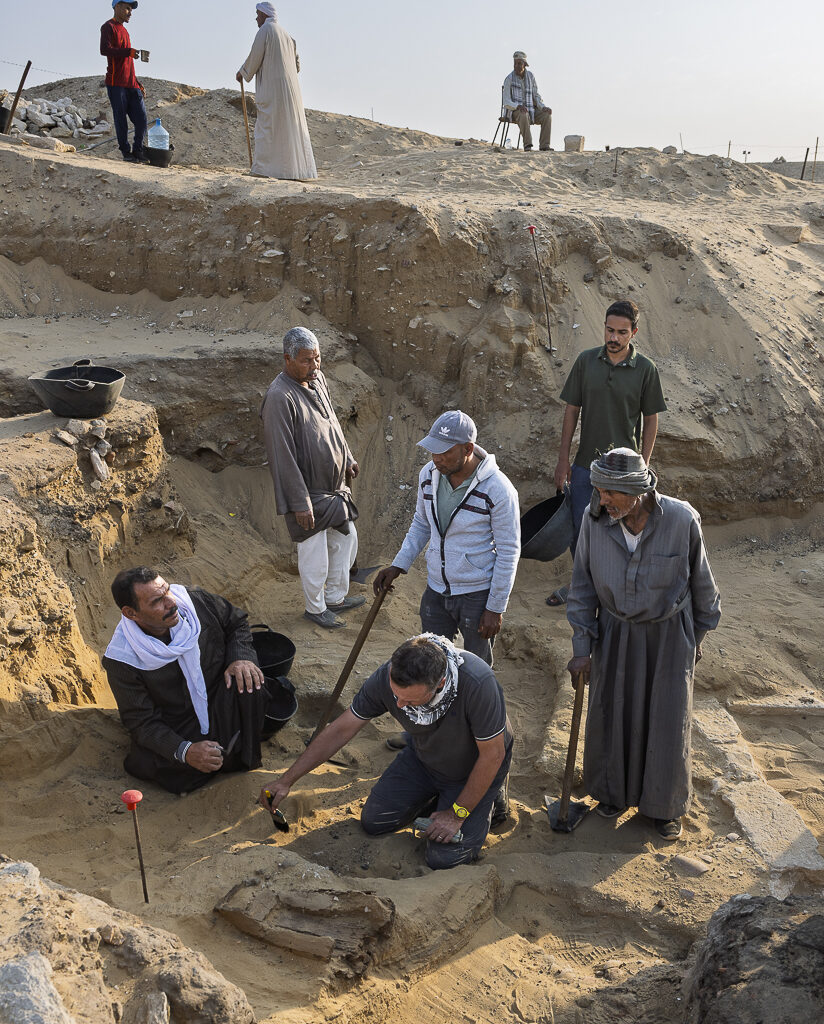
Figure 1: The work team - Essam Rashid, Paolo Del Vesco, Essam Saad Mohammed, and Hodhod Mahmud - investigates the area adjacent to Yuyu’s chapel. Photo by Nicola Dell’Aquila.
Meanwhile, all the finds discovered during the excavation - catalogued, drawn, and documented day by day - are being checked one by one to ensure nothing has been overlooked, and then carefully stored in the magazine. Every step is recorded, so that anyone in the future who wishes to locate the finds from the 2025 mission will be able to navigate the storage system with ease.
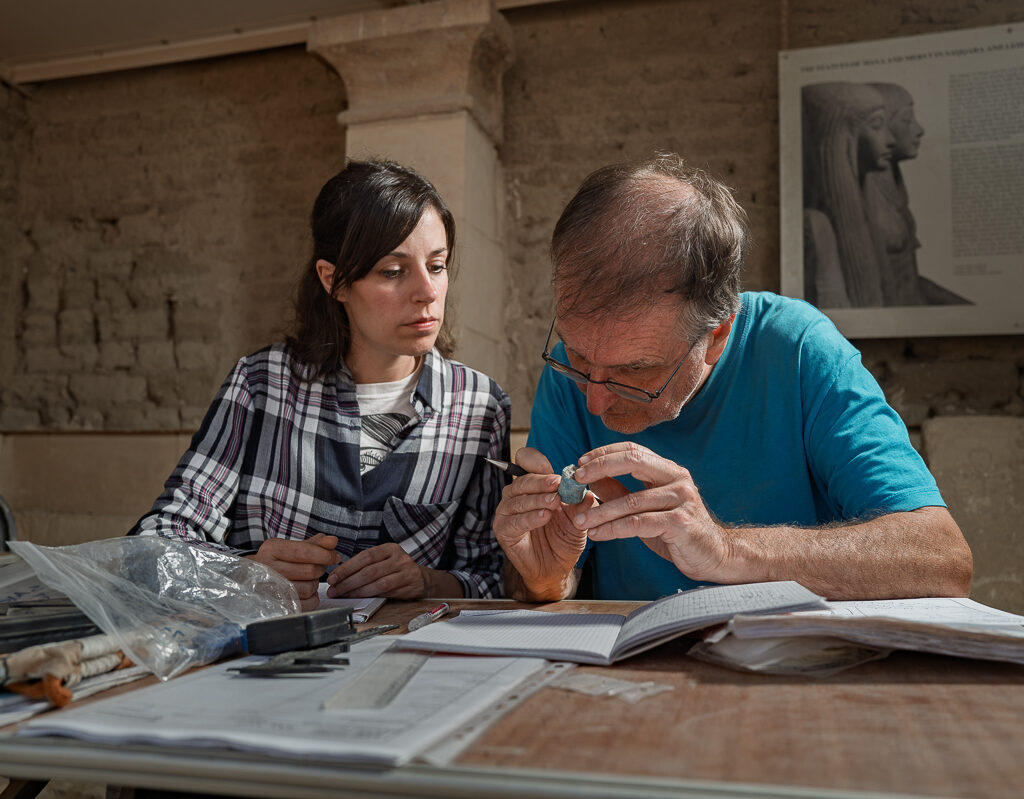
Figure 2: Martina Terzoli and Federico Poole catalog the finds uncovered during the excavation. Photo by Nicola Dell’Aquila.
Photographic documentation of all the mission’s materials is also being completed - from the smallest objects to ceramic fragments - and especially of Yuyu’s chapel, in order to finalize the epigraphic work carried out on site. Another key goal is to “bring home” the full record of what has been done: 3D models of the excavated areas, topographic surveys, photographs, stratigraphic notes. All this data will form the foundation for upcoming remote studies - including those focused on ceramics and wooden artifacts analyzed during the mission.
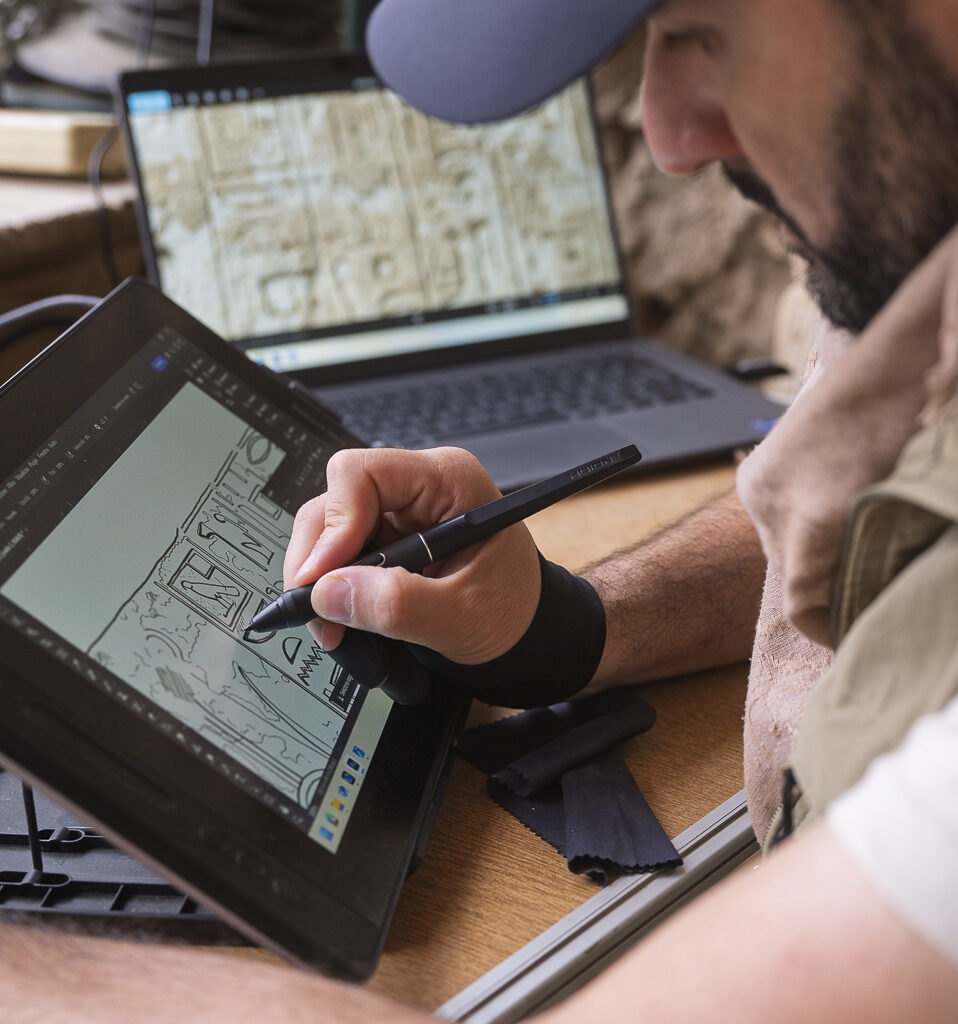
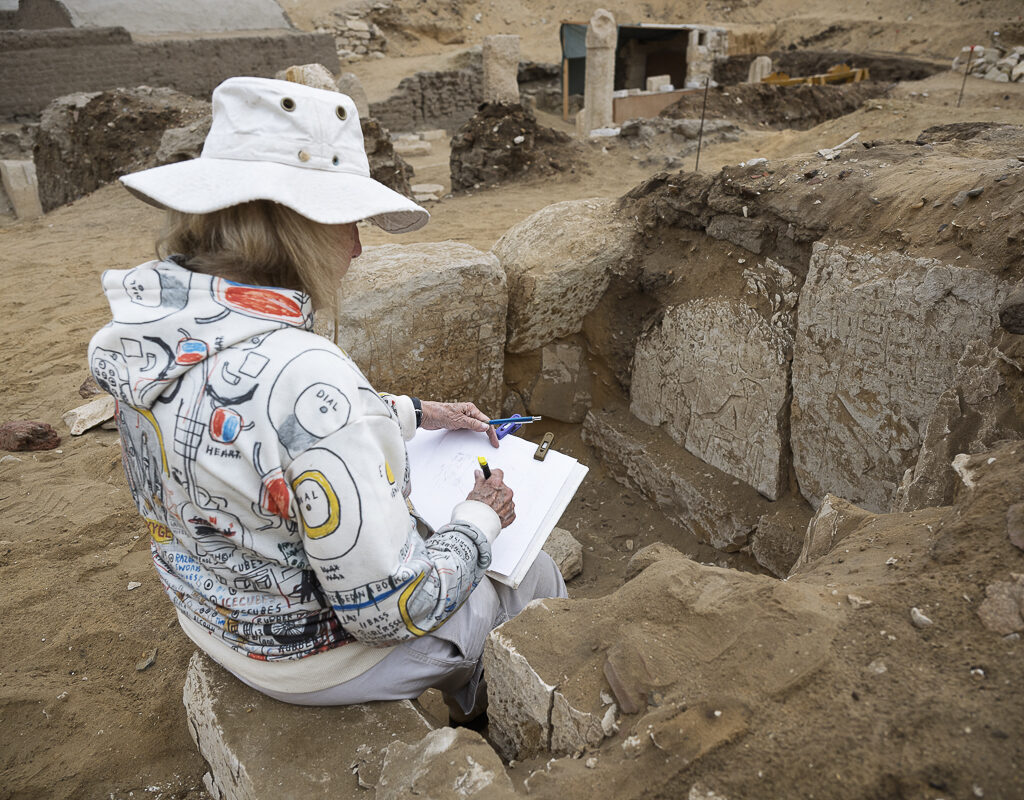
Figures 3–4: Paolo Marini and Lyla Pinch Brock document Yuyu’s chapel and Chapel 535. Photo by Nicola Dell’Aquila.
These are days of almost feverish activity. There’s a constant fear of running out of time - of leaving something unfinished, forgetting an important detail, or not completing a drawing or survey. Every detail matters, and every action, even the smallest, seems to carry extra weight. Yet time, in these moments, seems to move faster than ever. We work until the very end - checking forms, labeling boxes, and putting tools away. And when everything is finally in order, there comes that special silence that marks the end of fieldwork: we did it. There’s a deep sense of shared accomplishment - the awareness that every result stems from collective effort, and that each person has left a mark, visible or invisible, on the story of this mission.
Then comes the final day. It’s time for goodbyes - always a mix of joy and melancholy. Collaborators are thanked, notebooks are closed, and tools that for weeks have felt like extensions of our hands are packed away. We look around one last time, trying to fix in memory every detail of the site - the sun, the sand, the pyramids, the landscape.
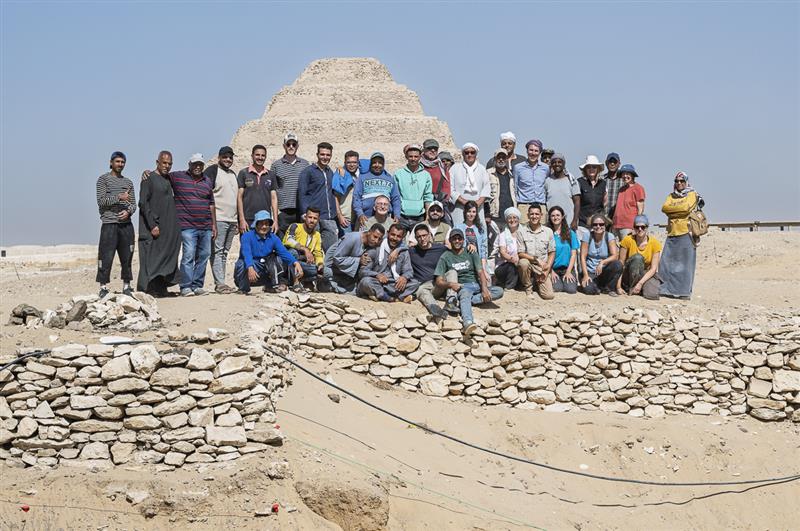
Figure 5: The full team. Photo by Nicola Dell’Aquila.
Leaving the excavation means stepping away from a routine that, day after day, has become home: the rhythms, the faces, the repeated gestures that give shape to shared work. Farewells come with hugs, handshakes, and promises to meet again soon. Then, as tradition dictates, the storage doors are sealed - the field season is officially over. And with that gesture, somewhere between melancholy and satisfaction, another chapter of the mission comes to a close.
But our work doesn’t end here. Everything the excavation has revealed must now be studied and interpreted. It’s a quieter but decisive phase, in which fieldwork transforms into scientific knowledge.
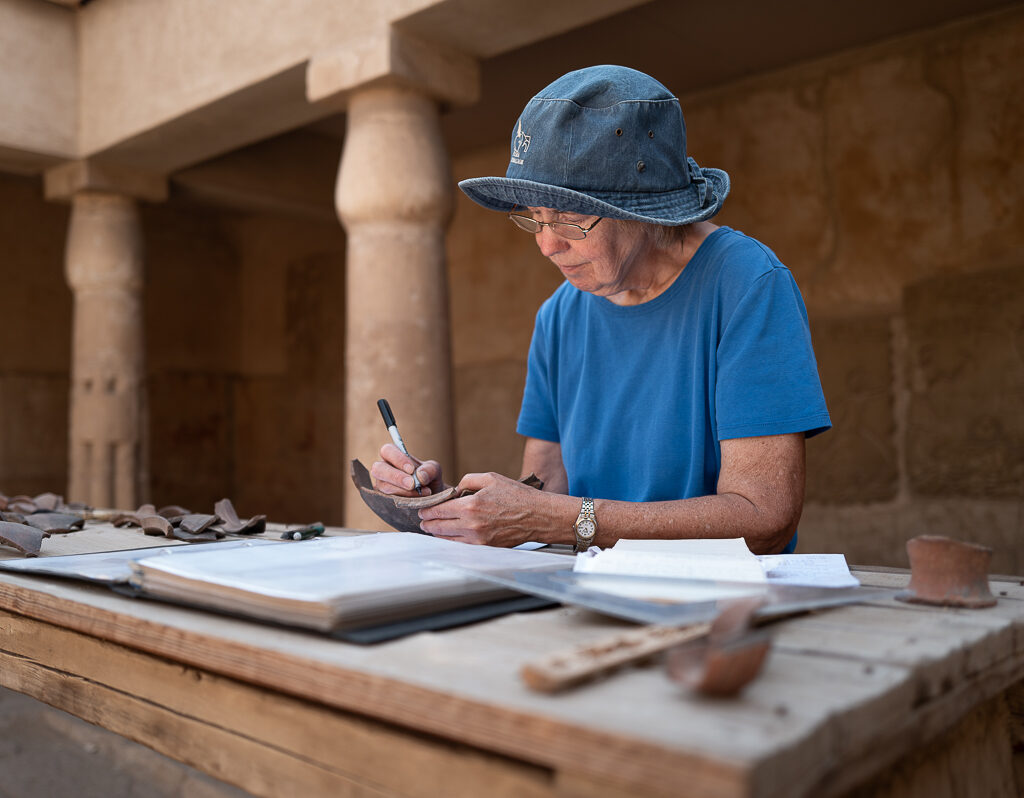

Figures 6-7: Barbara J. Aston studying Coptic pottery and Caroline Arbuckle examining wooden materials. Photo by Nicola Dell’Aquila.
Every end of a season is also a new beginning: a time for reflection, but above all, for preparation. The questions raised by the ground still await answers - and it will be the work of the coming months, and the next mission, to find them.
A heartfelt thank you to all the colleagues, collaborators, and friends who have been part of this team and made this mission possible- and to you, the reader, for following our work.
Until next year, inshallah.
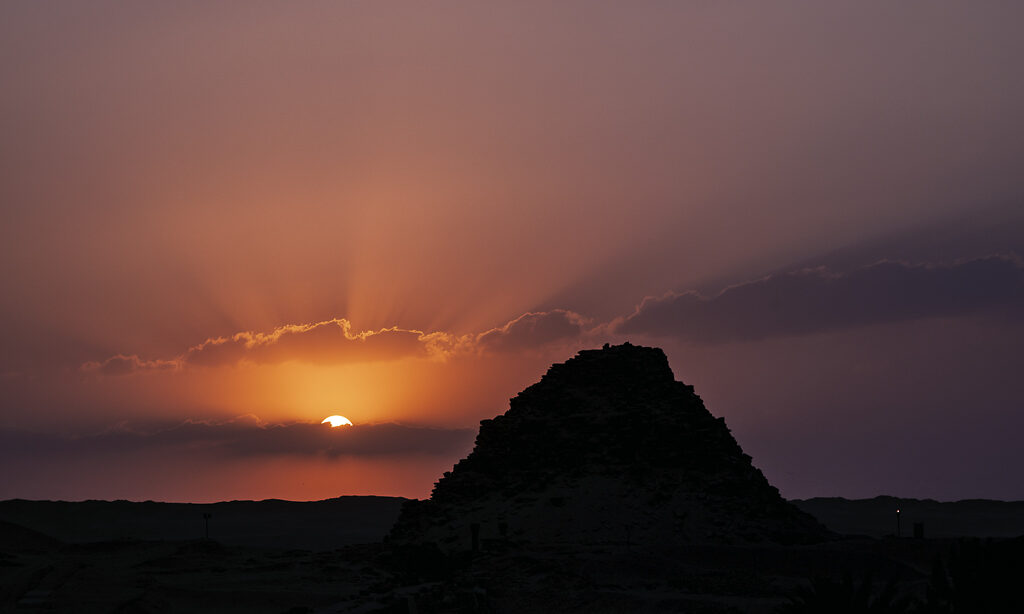
Figure 8: Sunset at Abusir. Photo by Nicola Dell’Aquila.
آخر الأيام في سقارة: إغلاق الموقع بانتظار البدء من جديد
لقد حلّ الخريف هنا في سقارة. يبدأ العمل مع بزوغ الشمس، لكن الأحوال الجوية تغيرت: هبات الرياح مستمرة، الغيوم تغطي الأفق وحلّت محل الحرارة الشديدة التي سادت خلال الأسابيع الماضية. يبدو أحياناً وكأن المطر على وشك الهطول. حان وقت إغلاق موقع الحفريات. بعد أسابيع من العمل الميداني، تبقى الخطوات كما هي، لكن الإيقاع يتغير: لم يعد الأمر يتعلق بالكشف عن الآثار، بل بالتحقق منها، إنهاء ما نحن بصدده وترتيب جميع القطع.
ساعدت التحقيقات الأثرية التي أجريناها منذ البداية وحتى الأيام الأخيرة بالوصول إلى مستوى مقصورة يويو والتحقق من الفرضية التي طُرِحت في عام 2023: الجدار الذي رأيناه في الموقع، في الواقع ليس جزءاً من المقصورة كما كنّا نعتقد، إنما هو جزء من مبنى آخر أقدم وقد تم بناء مقصورة يويو على زاويته. بعد التأكد من ذلك، حان الوقت لتأمين المنطقة: يجب تغطية بعض النقاط، بينما يتم حماية نقاط أخرى بواسطة الأقمشة والرمال، للحفاظ على ما تم العثور عليه. كل إجراء يهدف إلى الحفاظ على الموقع، بالإضافة الى إعداد الأرضية للحفريات المقبلة.

صورة رقم 1: فريق العمل، المكون من عصام رشيد، باولو ديل فيسكو، عصام سعد محمد وهدهد محمود، يتحققون من المنطقة المجاورة لمقصورة يويو. صورة: نيكولا ديلأكويلا
في غضون ذلك، يتم فحص جميع القطع الأثرية التي تم العثور عليها أثناء الحفريات - والتي قد سُجّلت ورُسِمت ووُثّقت يومأً بعد يوم - واحدة تلو الأخرى للتأكد من عدم إغفال أي شيء، ثم يتم ترتيبها بعناية داخل المستودع. يتم تسجيل كل خطوة، بحيث يتمكن أي شخص يرغب في المستقبل في استعادة مكتشفات بعثة عام 2025 ويستطيع التنقل داخل المستودع بسهولة.

صورة رقم 2: مارتينا تيرزولي وفيديريكو بول يسجلان القطع الأثرية التي تم اكتشافها أثناء الحفريات. صورة: نيكولا ديلأكويلا
نتابع أيضاً التوثيق الفوتوغرافي لجميع مواد البعثة - من أصغر الأشياء إلى شظايا الخزف - ولكن بشكل خاص مقصورة يويو، لاستكمال دراسة رموز النقوش الذي بدأنا بها في الموقع. الهدف الأساسي الآخر هو توثيق العمل المنجز ونقل كل المعلومات الى المخابر: النماذج ثلاثية الأبعاد للمناطق التي تم استكشافها، المسوحات الطبوغرافية، الصور الفوتوغرافية والدراسات المفصلة للطبقات الأثرية.
جميع هذه المعلومات ستكون بمثابة حجر الأساس للدراسات التي ستقام عن بُعد في الأشهر المقبلة، مثل دراسة الخزف أو القطع الخشبية التي اكتُشفت اثناء البعثة.


صورة رقم 3-4: باولو ماريني وليلى بينش بروك يوثقان مقصورة يويو و المقصورة 535. صورة: نيكولا ديلأكويلا
إنها أيام من العمل المستمر، بلا كلل ولا راحة، مع الخوف من عدم الانتهاء من كل الأعمال في الوقت المحدد، أو نسيان شيء مهم، أو عدم إكمال رسم أو مسح طبوغرافي. كل التفاصيل مهمة، كل حركة - حتى أصغرها - ذات أهمية خاصة. ومع ذلك، فإن الوقت في هذه اللحظات يمر أسرع من المعتاد. نواصل العمل حتى اللحظة الأخيرة، بين إعادة التحقّق من كل البطاقات، من الصناديق و وضع الملصقات عليها، ترتيب جميع الأدوات. وعندما يصبح كل شيء في مكانه أخيراً، يسود ذلك الصمت الخاص الذي يشير إلى انتهاء العمل: لقد نجحنا. لدينا شعور قوي بأن كل نجاح هو ثمرة جهد جماعي، وأن كل فرد قد ترك بصمته – مرئية أو غير مرئية – في سرد قصة هذه المهمة.
يأتي اليوم الأخير. حان وقت الوداع، الذي يكون دائماً خليط بين السعادة والحزن. نشكر جميع المشاركين، نطوي دفاتر الملاحظات ونخزّن الأدوات التي كانت لأسابيع جزءاً منّا كامتداد لأيدينا. ننظر حولنا، وكأننا نريد أن نحفر في ذاكرتنا كل تفاصيل الموقع: الشمس، الرمال، الأهرامات والمناظر الطبيعية.

صورة رقم 5: فريق العمل بالكامل. صورة: نيكولا ديلأكويلا
ترك موقع الحفريات يعني إنهاء روتين أصبح، يوماً بعد يوم، بمثابة المنزل: الإيقاعات، الوجوه، الإيماءات المتكررة التي اصبحت روح العمل المشترك. نودّع بعضنا البعض بالعناق والمصافحة ووعود باللقاء القريب. ثم، كما جرت العادة، يتم وضع الأختام على أبواب المستودعات: العمل الميداني قد انتهى رسمياً. وبهذا الإجراء، بين الحزن والرضا، ينتهي فصل آخر من المهمة.
لكن عملنا لا ينتهي هنا. كل ما كشفته الحفريات يجب الآن دراسته وأرشفته. إنها مرحلة صامتة ولكنها حاسمة، حيث يتحوّل العمل الميداني إلى معرفة علمية.

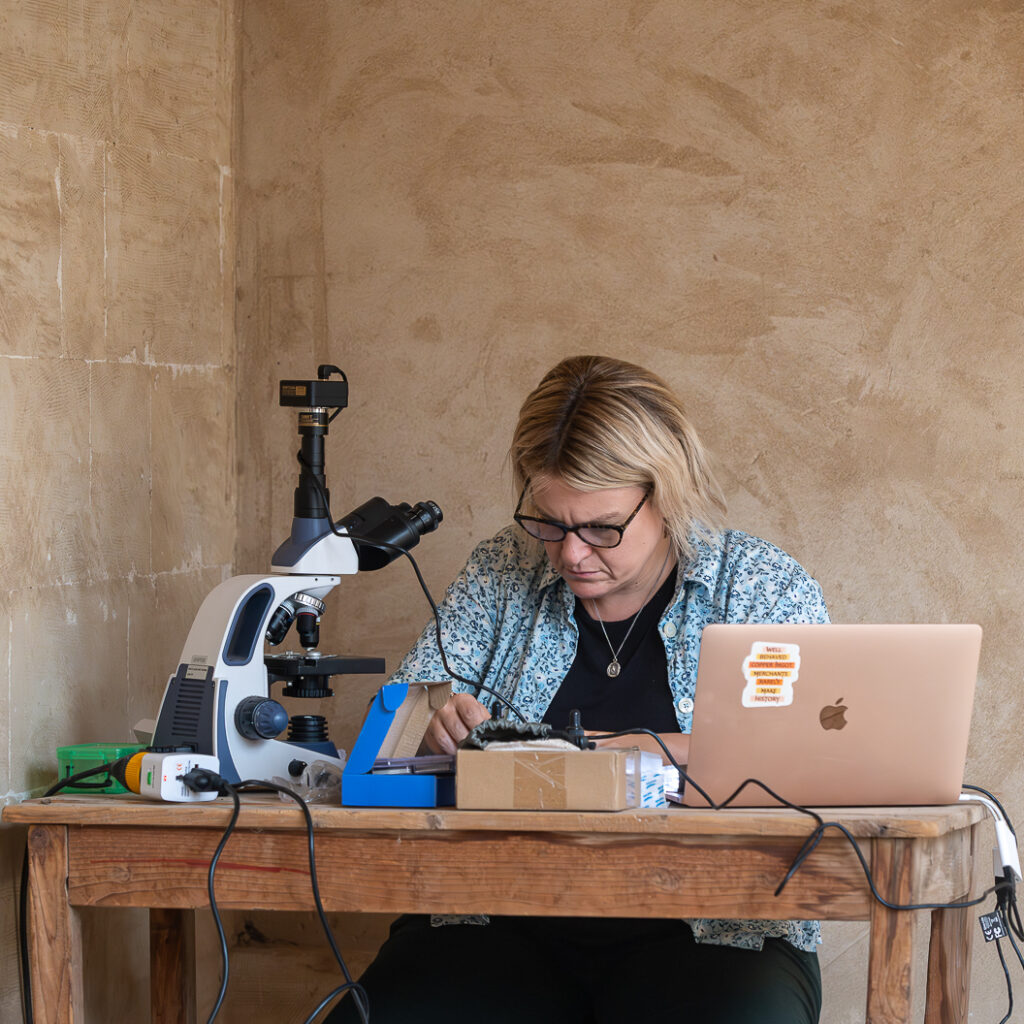
صورة رقم 6-7: باربرا ج. أستون منشغلة بدراسة الخزف القبطي وكارولين أربكل تدرس المواد الخشبية. صورة: نيكولا ديلأكويلا
كل نهاية موسم الحفريات هي أيضا بداية جديدة: لحظة تقييم، ولكن قبل كل شيء لحظة استعداد. الأسئلة والشكوك التي ظهرت أثناء الحفر لا تزال تنتظر الإجابة، سيكون من مهام العمل في الأشهر القادمة – والمهمة القادمة – البحث والإجابة عن تلك الاستفسارات.
شكر خاص لجميع الزملاء والزميلات والمشاركين والمشاركات وأصدقاء هذا الفريق الذين ساهموا في اتمام هذه المهمة، والشكر الجزيل لكم أنتم، من تقرؤن وتتابعون اخبارنا.
إلى العام المقبل، إن شاء الله.

صورة رقم 8: غروب الشمس في أبو صير. صورة: نيكولا ديلأكويلا
Autumn has officially arrived here in Saqqara. Work now begins with the sun already high, but the atmosphere has changed: the intense heat of the past weeks has given way to a steady breeze and clouds scattered across the horizon. At times, it almost feels like it might rain.
It’s time to wrap up the excavation. After weeks of fieldwork, the tasks remain the same, but the rhythm shifts - it’s no longer about uncovering, but about checking, completing, and putting things in order.
The archaeological investigation, carried on until the very last days, allowed us to reach the level of Yuyu’s chapel and confirm a hypothesis made in 2023: the wall we had previously seen in section does not actually belong to the chapel, as we once thought, but to another, earlier structure against which Yuyu’s chapel was later built. Once this was established, it was time to secure the area: some sections were covered, others protected with fabric and sand, to preserve what had been uncovered. Every gesture serves both to conserve and to prepare the ground for the next mission.

Figure 1: The work team - Essam Rashid, Paolo Del Vesco, Essam Saad Mohammed, and Hodhod Mahmud - investigates the area adjacent to Yuyu’s chapel. Photo by Nicola Dell’Aquila.
Meanwhile, all the finds discovered during the excavation - catalogued, drawn, and documented day by day - are being checked one by one to ensure nothing has been overlooked, and then carefully stored in the magazine. Every step is recorded, so that anyone in the future who wishes to locate the finds from the 2025 mission will be able to navigate the storage system with ease.

Figure 2: Martina Terzoli and Federico Poole catalog the finds uncovered during the excavation. Photo by Nicola Dell’Aquila.
Photographic documentation of all the mission’s materials is also being completed - from the smallest objects to ceramic fragments - and especially of Yuyu’s chapel, in order to finalize the epigraphic work carried out on site. Another key goal is to “bring home” the full record of what has been done: 3D models of the excavated areas, topographic surveys, photographs, stratigraphic notes. All this data will form the foundation for upcoming remote studies - including those focused on ceramics and wooden artifacts analyzed during the mission.


Figures 3–4: Paolo Marini and Lyla Pinch Brock document Yuyu’s chapel and Chapel 535. Photo by Nicola Dell’Aquila.
These are days of almost feverish activity. There’s a constant fear of running out of time - of leaving something unfinished, forgetting an important detail, or not completing a drawing or survey. Every detail matters, and every action, even the smallest, seems to carry extra weight. Yet time, in these moments, seems to move faster than ever. We work until the very end - checking forms, labeling boxes, and putting tools away. And when everything is finally in order, there comes that special silence that marks the end of fieldwork: we did it. There’s a deep sense of shared accomplishment - the awareness that every result stems from collective effort, and that each person has left a mark, visible or invisible, on the story of this mission.
Then comes the final day. It’s time for goodbyes - always a mix of joy and melancholy. Collaborators are thanked, notebooks are closed, and tools that for weeks have felt like extensions of our hands are packed away. We look around one last time, trying to fix in memory every detail of the site - the sun, the sand, the pyramids, the landscape.

Figure 5: The full team. Photo by Nicola Dell’Aquila.
Leaving the excavation means stepping away from a routine that, day after day, has become home: the rhythms, the faces, the repeated gestures that give shape to shared work. Farewells come with hugs, handshakes, and promises to meet again soon. Then, as tradition dictates, the storage doors are sealed - the field season is officially over. And with that gesture, somewhere between melancholy and satisfaction, another chapter of the mission comes to a close.
But our work doesn’t end here. Everything the excavation has revealed must now be studied and interpreted. It’s a quieter but decisive phase, in which fieldwork transforms into scientific knowledge.


Figures 6-7: Barbara J. Aston studying Coptic pottery and Caroline Arbuckle examining wooden materials. Photo by Nicola Dell’Aquila.
Every end of a season is also a new beginning: a time for reflection, but above all, for preparation. The questions raised by the ground still await answers - and it will be the work of the coming months, and the next mission, to find them.
A heartfelt thank you to all the colleagues, collaborators, and friends who have been part of this team and made this mission possible- and to you, the reader, for following our work.
Until next year, inshallah.

Figure 8: Sunset at Abusir. Photo by Nicola Dell’Aquila.
آخر الأيام في سقارة: إغلاق الموقع بانتظار البدء من جديد
لقد حلّ الخريف هنا في سقارة. يبدأ العمل مع بزوغ الشمس، لكن الأحوال الجوية تغيرت: هبات الرياح مستمرة، الغيوم تغطي الأفق وحلّت محل الحرارة الشديدة التي سادت خلال الأسابيع الماضية. يبدو أحياناً وكأن المطر على وشك الهطول. حان وقت إغلاق موقع الحفريات. بعد أسابيع من العمل الميداني، تبقى الخطوات كما هي، لكن الإيقاع يتغير: لم يعد الأمر يتعلق بالكشف عن الآثار، بل بالتحقق منها، إنهاء ما نحن بصدده وترتيب جميع القطع.
ساعدت التحقيقات الأثرية التي أجريناها منذ البداية وحتى الأيام الأخيرة بالوصول إلى مستوى مقصورة يويو والتحقق من الفرضية التي طُرِحت في عام 2023: الجدار الذي رأيناه في الموقع، في الواقع ليس جزءاً من المقصورة كما كنّا نعتقد، إنما هو جزء من مبنى آخر أقدم وقد تم بناء مقصورة يويو على زاويته. بعد التأكد من ذلك، حان الوقت لتأمين المنطقة: يجب تغطية بعض النقاط، بينما يتم حماية نقاط أخرى بواسطة الأقمشة والرمال، للحفاظ على ما تم العثور عليه. كل إجراء يهدف إلى الحفاظ على الموقع، بالإضافة الى إعداد الأرضية للحفريات المقبلة.

صورة رقم 1: فريق العمل، المكون من عصام رشيد، باولو ديل فيسكو، عصام سعد محمد وهدهد محمود، يتحققون من المنطقة المجاورة لمقصورة يويو. صورة: نيكولا ديلأكويلا
في غضون ذلك، يتم فحص جميع القطع الأثرية التي تم العثور عليها أثناء الحفريات - والتي قد سُجّلت ورُسِمت ووُثّقت يومأً بعد يوم - واحدة تلو الأخرى للتأكد من عدم إغفال أي شيء، ثم يتم ترتيبها بعناية داخل المستودع. يتم تسجيل كل خطوة، بحيث يتمكن أي شخص يرغب في المستقبل في استعادة مكتشفات بعثة عام 2025 ويستطيع التنقل داخل المستودع بسهولة.

صورة رقم 2: مارتينا تيرزولي وفيديريكو بول يسجلان القطع الأثرية التي تم اكتشافها أثناء الحفريات. صورة: نيكولا ديلأكويلا
نتابع أيضاً التوثيق الفوتوغرافي لجميع مواد البعثة - من أصغر الأشياء إلى شظايا الخزف - ولكن بشكل خاص مقصورة يويو، لاستكمال دراسة رموز النقوش الذي بدأنا بها في الموقع. الهدف الأساسي الآخر هو توثيق العمل المنجز ونقل كل المعلومات الى المخابر: النماذج ثلاثية الأبعاد للمناطق التي تم استكشافها، المسوحات الطبوغرافية، الصور الفوتوغرافية والدراسات المفصلة للطبقات الأثرية.
جميع هذه المعلومات ستكون بمثابة حجر الأساس للدراسات التي ستقام عن بُعد في الأشهر المقبلة، مثل دراسة الخزف أو القطع الخشبية التي اكتُشفت اثناء البعثة.


صورة رقم 3-4: باولو ماريني وليلى بينش بروك يوثقان مقصورة يويو و المقصورة 535. صورة: نيكولا ديلأكويلا
إنها أيام من العمل المستمر، بلا كلل ولا راحة، مع الخوف من عدم الانتهاء من كل الأعمال في الوقت المحدد، أو نسيان شيء مهم، أو عدم إكمال رسم أو مسح طبوغرافي. كل التفاصيل مهمة، كل حركة - حتى أصغرها - ذات أهمية خاصة. ومع ذلك، فإن الوقت في هذه اللحظات يمر أسرع من المعتاد. نواصل العمل حتى اللحظة الأخيرة، بين إعادة التحقّق من كل البطاقات، من الصناديق و وضع الملصقات عليها، ترتيب جميع الأدوات. وعندما يصبح كل شيء في مكانه أخيراً، يسود ذلك الصمت الخاص الذي يشير إلى انتهاء العمل: لقد نجحنا. لدينا شعور قوي بأن كل نجاح هو ثمرة جهد جماعي، وأن كل فرد قد ترك بصمته – مرئية أو غير مرئية – في سرد قصة هذه المهمة.
يأتي اليوم الأخير. حان وقت الوداع، الذي يكون دائماً خليط بين السعادة والحزن. نشكر جميع المشاركين، نطوي دفاتر الملاحظات ونخزّن الأدوات التي كانت لأسابيع جزءاً منّا كامتداد لأيدينا. ننظر حولنا، وكأننا نريد أن نحفر في ذاكرتنا كل تفاصيل الموقع: الشمس، الرمال، الأهرامات والمناظر الطبيعية.

صورة رقم 5: فريق العمل بالكامل. صورة: نيكولا ديلأكويلا
ترك موقع الحفريات يعني إنهاء روتين أصبح، يوماً بعد يوم، بمثابة المنزل: الإيقاعات، الوجوه، الإيماءات المتكررة التي اصبحت روح العمل المشترك. نودّع بعضنا البعض بالعناق والمصافحة ووعود باللقاء القريب. ثم، كما جرت العادة، يتم وضع الأختام على أبواب المستودعات: العمل الميداني قد انتهى رسمياً. وبهذا الإجراء، بين الحزن والرضا، ينتهي فصل آخر من المهمة.
لكن عملنا لا ينتهي هنا. كل ما كشفته الحفريات يجب الآن دراسته وأرشفته. إنها مرحلة صامتة ولكنها حاسمة، حيث يتحوّل العمل الميداني إلى معرفة علمية.


صورة رقم 6-7: باربرا ج. أستون منشغلة بدراسة الخزف القبطي وكارولين أربكل تدرس المواد الخشبية. صورة: نيكولا ديلأكويلا
كل نهاية موسم الحفريات هي أيضا بداية جديدة: لحظة تقييم، ولكن قبل كل شيء لحظة استعداد. الأسئلة والشكوك التي ظهرت أثناء الحفر لا تزال تنتظر الإجابة، سيكون من مهام العمل في الأشهر القادمة – والمهمة القادمة – البحث والإجابة عن تلك الاستفسارات.
شكر خاص لجميع الزملاء والزميلات والمشاركين والمشاركات وأصدقاء هذا الفريق الذين ساهموا في اتمام هذه المهمة، والشكر الجزيل لكم أنتم، من تقرؤن وتتابعون اخبارنا.
إلى العام المقبل، إن شاء الله.

صورة رقم 8: غروب الشمس في أبو صير. صورة: نيكولا ديلأكويلا
info@museitorino.it
011 44 06 903
From Monday to Saturday from 9:00 a.m. to 6:00 p.m.